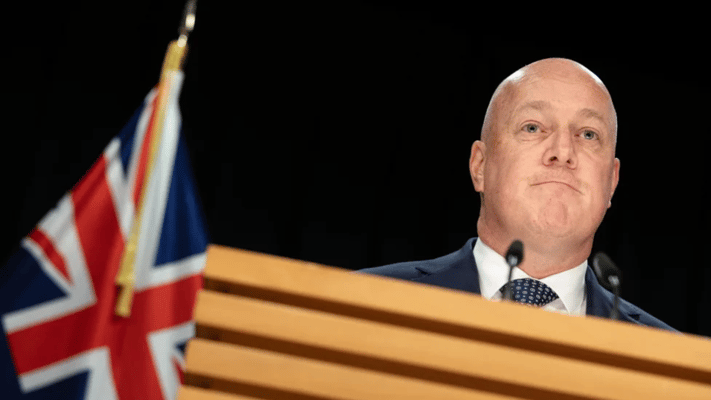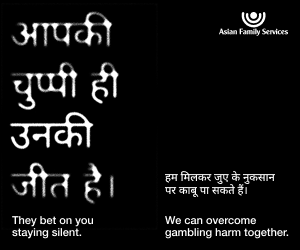Govt's 9 Targets In Health, Crime, Social Support, Education, Climate

Prime Minister Christopher Luxon has announced nine targets for the government to deliver in the next six years.
The targets include:
- Emergency Departments: 95 percent of ED patients admitted, discharged or transferred within six hours
- Elective treatment: 95 percent of people waiting less than four months
- Child and youth offending: 15 percent reduction in total children with serious and persistent offending (by 2029)
- Violent crime: 20,000 fewer victims of assault, robbery or sexual assault (by 2029)
- Jobseeker benefit: 50,000 fewer people on jobseeker benefit
- Student attendance: 80 percent of students present for 90 percent of term
- Student achievement: 80 percent of Y8 students at or above expected reading, writing and maths curriculum level (by Dec 2030)
- Emergency housing: 75 percent reduction in households in emergency housing
- Greenhouse gas: No more than 290 megatonnes emitted in 2022 to 2025 (four years), and 305 from 2026 to 2030 (five years)
The government's media release stated the targets were to be achieved by 2030, although some had more specific timeframes - including a December 2030 deadline for the student achievement target.
Accompanying documentation also set out the surveys and other research that would be used to measure progress.
The two health targets were also among five Luxon announced alongside Health Minister Shane Reti last month.
Each target is assigned to a government minister and agency to oversee, working as appropriate with other ministers and ministries, with progress reports to be publicly released every quarter.
In a statement, Luxon said the government was "under no illusion about the scale of the challenges we face as a country"
Our Government is bringing back public sector service targets, to focus our public sector on driving better results for New Zealanders in health, education, law and order, work, housing, and the environment. pic.twitter.com/Co8JX5mAh2
— Christopher Luxon (@chrisluxonmp) April 8, 2024
"Despite the hard work of frontline staff like police, nurses and teachers, New Zealand has gone backwards in recent years," he said. "That's why our government is bringing back public service targets, to focus our public sector on driving better results for New Zealanders in health, education, law and order, work, housing, and the environment."
He said the targets were "deliberately ambitious".
"They will be challenging and require the public sector to think differently, dig deeply into root causes, learn from other places, and be innovative and disciplined in directing resources to where they will have the greatest impact on outcomes."
The targets were signalled in the coalition's 36-point second quarterly plan unveiled last week.
John Key's National government introduced 10 targets in 2012, aiming for cross-agency collaboration involving multiple ministers and ministries.
Those targets aimed for percentage reductions in rheumatic fever, crime rates, assaults on children, and the number of people on a benefit; percentage increases to infant immunisation rates, early childhood education participation, and NCEA and tertiary qualifications; and more online interaction with government services.
They were redesigned by Sir Bill English in 2017 - including shifting some to a flat number rather than percentages - but were scrapped by the Labour government a year later.
Public policy academic Jonathan Boston last week told RNZ they had been effective at achieving better outcomes, but it could sometimes come at the expense of non-targeted areas.
The Public Service Association union's national secretary Kerry Davies also warned that if the targets were too narrowly focused they could lead to unintended or perverse outcomes.
The targets also come alongside the government's promised cuts to the public sector, with the Ministry for the Environment the latest to call for voluntary redundancies.
Crown entity Callaghan Innovation has also announced about 30 full-time equivalent roles could be cut with final decisions expected in May or June.
Prime Minister Christopher Luxon has announced nine targets for the government to deliver in the next six years.
The targets include:
- Emergency Departments: 95 percent of ED patients admitted, discharged or transferred within six hours
- Elective treatment: 95 percent of people waiting less than...
Prime Minister Christopher Luxon has announced nine targets for the government to deliver in the next six years.
The targets include:
- Emergency Departments: 95 percent of ED patients admitted, discharged or transferred within six hours
- Elective treatment: 95 percent of people waiting less than four months
- Child and youth offending: 15 percent reduction in total children with serious and persistent offending (by 2029)
- Violent crime: 20,000 fewer victims of assault, robbery or sexual assault (by 2029)
- Jobseeker benefit: 50,000 fewer people on jobseeker benefit
- Student attendance: 80 percent of students present for 90 percent of term
- Student achievement: 80 percent of Y8 students at or above expected reading, writing and maths curriculum level (by Dec 2030)
- Emergency housing: 75 percent reduction in households in emergency housing
- Greenhouse gas: No more than 290 megatonnes emitted in 2022 to 2025 (four years), and 305 from 2026 to 2030 (five years)
The government's media release stated the targets were to be achieved by 2030, although some had more specific timeframes - including a December 2030 deadline for the student achievement target.
Accompanying documentation also set out the surveys and other research that would be used to measure progress.
The two health targets were also among five Luxon announced alongside Health Minister Shane Reti last month.
Each target is assigned to a government minister and agency to oversee, working as appropriate with other ministers and ministries, with progress reports to be publicly released every quarter.
In a statement, Luxon said the government was "under no illusion about the scale of the challenges we face as a country"
Our Government is bringing back public sector service targets, to focus our public sector on driving better results for New Zealanders in health, education, law and order, work, housing, and the environment. pic.twitter.com/Co8JX5mAh2
— Christopher Luxon (@chrisluxonmp) April 8, 2024
"Despite the hard work of frontline staff like police, nurses and teachers, New Zealand has gone backwards in recent years," he said. "That's why our government is bringing back public service targets, to focus our public sector on driving better results for New Zealanders in health, education, law and order, work, housing, and the environment."
He said the targets were "deliberately ambitious".
"They will be challenging and require the public sector to think differently, dig deeply into root causes, learn from other places, and be innovative and disciplined in directing resources to where they will have the greatest impact on outcomes."
The targets were signalled in the coalition's 36-point second quarterly plan unveiled last week.
John Key's National government introduced 10 targets in 2012, aiming for cross-agency collaboration involving multiple ministers and ministries.
Those targets aimed for percentage reductions in rheumatic fever, crime rates, assaults on children, and the number of people on a benefit; percentage increases to infant immunisation rates, early childhood education participation, and NCEA and tertiary qualifications; and more online interaction with government services.
They were redesigned by Sir Bill English in 2017 - including shifting some to a flat number rather than percentages - but were scrapped by the Labour government a year later.
Public policy academic Jonathan Boston last week told RNZ they had been effective at achieving better outcomes, but it could sometimes come at the expense of non-targeted areas.
The Public Service Association union's national secretary Kerry Davies also warned that if the targets were too narrowly focused they could lead to unintended or perverse outcomes.
The targets also come alongside the government's promised cuts to the public sector, with the Ministry for the Environment the latest to call for voluntary redundancies.
Crown entity Callaghan Innovation has also announced about 30 full-time equivalent roles could be cut with final decisions expected in May or June.










Leave a Comment